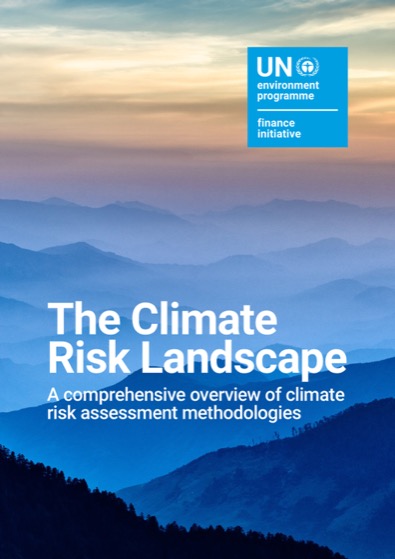The Climate Risk Landscape: Mapping Climate-related Financial Risk Assessment Methodologies provides a summary of the key developments across third party climate risk assessment providers since May 2019, including new and updated scenarios, methodological tools, key guidelines, as well as an overview of the changing regulatory landscape and potential developments into 2021.
This report covers both physical and transition risks, though the headline results on physical risks have incorporated the results of an analysis of physical risk methodologies and data sources in chapters 2 (Data portals) and 4 (Methodologies) of UNEP FI and Acclimatise’s recently released report, Charting a New Climate (2020) developed for UNEP FI’s TCFD Banking Pilot Project Phase II. This overview has adopted a two-step process by engaging with methodology developers to provide information on their tools and methodologies, which have been subsequently verified through objective research.
The Climate Risk Landscape report was updated in early April to take account of our TCFD Pilot partner, Oliver Wyman’s in-depth analytical tool, Climate Credit Analytics, developed in collaboration wth S&P Global Market Intelligence.
Download the report in Chinese – 下载中文
Climate Risk Dashboard
In January 2024, UNEP FI’s Climate Risk and TCFD Programme updated the Climate Risk Tool Dashboard, further supporting financial institutions in navigating the constantly evolving universe of climate risk tools. This database aims at enhancing climate risk tools readability by providing a comprehensive overview of more than 40 tools’ features, metrics, methodology, assumptions, and common use cases. It includes extensive information on tools’ features, alignment with sustainability-related disclosure standards or regulations, policies around data quality and sourcing, and more.



